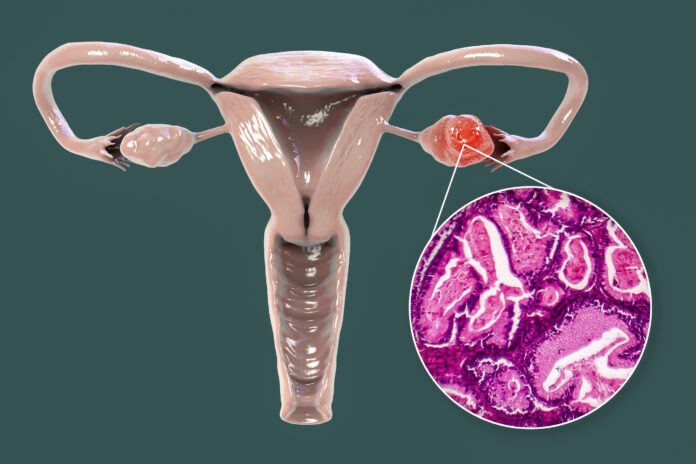Catch up with what Optometry Times®’ shared this week:
(Adobe Stock / Monkey Business)

This is what eye care providers need to know about type 1 diabetes
A. Paul Chous, MA, OD, FAAO
Autoimmune type 1 diabetes (T1D) affects 1.6 million Americans and about 9 million individuals worldwide.1 More than 40% of patients receive diagnoses after age 30 years,2 and incidence according to the JDRF (Juvenile Diabetes Research Foundation) is split evenly between those older than 18 years with newly diagnosed T1D and those who were 18 years or younger when they received the diagnosis (110/d in each age bracket).3 So, using juvenile diabetes to refer to T1D is incorrect.
Even though all patients with T1D require exogenous insulin for survival, approximately 30% of patients with type 2 diabetes (T2D) also require insulin therapy due to a progressive insulin secretory defect,4 so that using the term insulin-dependent diabetes to refer exclusively to T1D is also incorrect. Every scientific body recommends that these anachronistic terms be avoided, although their use remains common when reviewing lay and medical presentations. Semantic arguments aside, T1D is one of the most common, chronic diseases affecting pediatric populations.5
FDA warns against the use of certain illegally marketed methylsulfonylmethane (MSM) eye drops due to contamination
Martin David Harp, Associate Editor, Ophthalmology Times
The US Food and Drug Administration (FDA) is warning consumers to cease use and not purchase Dr. Berne’s MSM Drops 5% Solution and LightEyez MSM Eye Drops – Eye Repair due to bacterial contamination, fungal contamination, or both.
According to the FDA,1 using contaminated eye drops could result in a minor to serious vision-threatening infection which could possibly progress to a life-threatening infection.
As of August 28, 2023, Dr. Berne’s has received reports of 2 adverse events associated with the use of these eye drops and has initiated a voluntary recall of all lots of MSM Drops 5% and 15% Solution. The company has also issued a voluntary recall of Dr. Berne’s Organic Castor Oil Eye Drops and MSM MIST 15% Solution at the consumer level.
Patients who have signs or symptoms of eye infection after use should consult their health care professional immediately.
Third annual NECO Industry Collaborative bridges connection
Kassi Jackson, Editor
The third annual New England College of Optometry (NECO) Industry Collaborative brought together over 120 guests across various industries August 21 and August 22. Members of the eye care industry, professional organizations, health care, academia, and the media all converged to connect, debate, and deliberate the topic of supply and demand in optometry.1
In the opening session, Gary Chu, OD, NECO vice president for professional affairs, welcomed guests by sharing that according to the Bureau of Labor Statistics, the demand for optometrists is expected to grow 4-7% during 2021 to 2031.2
Pediatric myopia and keratoconus: Cross-linking and ortho-k in children
Kevin Chan, OD, MS, FAAO; Tracy Swartz, OD, MS, FAAO
Keratoconus is known as a bilateral, noninflammatory ectatic corneal disorder characterized by progressive stromal thinning, corneal irregularities, and permanent vision loss—and it is associated with progressive myopia. Because distinct clinical signs, such as corneal steepening or thinning, Vogt striae, Fleischer ring, or Munson sign, may not manifest in the early stages in the pediatric population, cases of keratoconus are largely underdiagnosed in this patient group.
In part 1 of this series, we discussed the similarities between myopia and keratoconus. Research suggests the onset and development of myopia may be implicated by different stages of corneal biomechanical variabilities, which indicates that the relationship between myopia and keratoconus may be more common than initially expected. Due to the progressive nature of keratoconus, it is essential to examine the link in an attempt to quell vision loss.
In this installment, we investigate treatment options for both keratoconus and myopia as well as how the intersection may affect therapy choice.
The confusion surrounding atropine use to control myopia
Kathleen Thai, BS
Researchers have looked to the potential of atropine to control myopia for a long time, but the results of various studies have caused prescribing confusion among clinicians.
The confusion lies in the results of a recent study that suggested that atropine does not slow the progression of myopia in low to moderate myopes when compared to use of a placebo.1 One unique thing about this study was its location—it was one of the first large randomized clinical trial in the US. Most previous trials have been conducted in East Asia where myopia prevalence is very high.
Pachymetry holds a place in patient care
Benjamin P. Casella, OD, FAAO
We seem to be on track to have a paradigm shift in the arena of glaucoma every generation or so. I must admit that during my lectures I enjoy pushing back at the audience by reminding them that new technology coming out does not mean we can forget about aspects of glaucoma diagnosis and management such as actually looking at the optic nerve through a dilated pupil with our own eyes. I have a course titled, “Don’t Get Fooled: When the OCT Goofs,” in which I admittedly sound like an old, holdout curmudgeon as I go through a grand rounds format of cases in which the optical coherence tomography (OCT) studies were fallacious enough to throw the clinician off the trail of a correct diagnosis.
So at the risk of this middle-aged optometrist sounding like a curmudgeon yet again, allow me to wax poetic on the topic of pachymetry and its importance for a few lines. Buckle up. This month’s column is going to be an exciting one.
Transcutaneous radiofrequency treatment helps alleviate dry eye signs and symptoms
Lynda Charters
Radiofrequency treatment in conjunction with expression of the meibomian glands reduces the signs and symptoms of dry eye disease,1 reported lead author Sean Paul, MD. He is from the Department of Oculoplastic Surgery, Austin Face and Body, Austin, TX.
He and his colleagues explained that because meibomian gland dysfunction disrupts tear film homeostasis and results in dry eye syndrome, they wanted to explore if transcutaneous radiofrequency-assisted meibomian gland expression can effectively treat dry eye syndrome.
They conducted a multicenter, prospective cohort study of patients with dry eye using the Envision platform that includes the Forma-I handpiece (InMode) to apply the treatment.
The study ran from October 2019 to June 2022.









